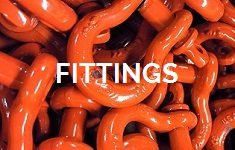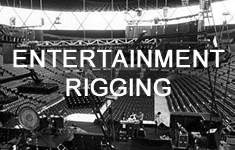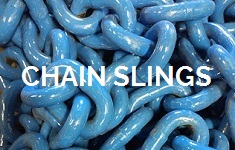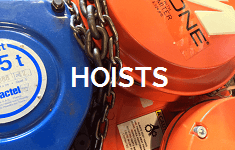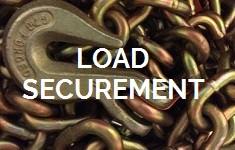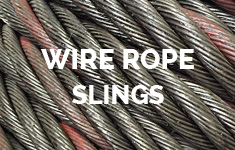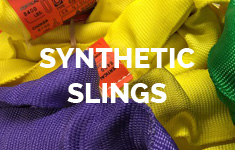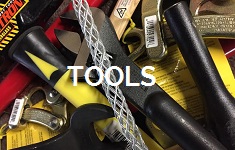Reasons Your Rigging System May Fail and Why Inspection Matters
Rigging is something that you shouldn’t have to notice. The audience shouldn’t know that it is there, outside of the elements that it’s working with. Think about this for a moment. The rigging that you have up for lighting, video, speaker elements, and much more is very important. If it’s not well placed, you will end up seeing a major drop off that could very well cause a serious issue.
The next time you go to a concert, look up. Above the stage, throughout the venue, and much more. You’ll find that there is lighting gears, pipes, trusses, rigging equipment, and so much more. This is all put into place for visual elements. The building that you’re in has this in place, and you’re safe, right?
Inspections matter, and if you don’t have the right rigging elements in place, you are going to be put in danger. So that’s why professionals focus on getting equipment, and secure elements from trusted resources. For instance, you’ll find that Tway Lifting is one of the best options to consider. They help with getting rigging, rentals, and more.
Why Is Rigging Important Anyway?
Before you get into the reasons why your rigging system may fail, and why inspection matters, it’s important to consider why these things are important. The reason why these things are important is because you need a catwalk, as well as lighting elements to hang. You can’t simply stack lighting, audio equipment, and more to the ceiling without something to offset the weight. If you just put things on the ceiling, you’ll find that the weight could cause a collapse.
By adding rigging, and putting in catwalks, you can not only maintain safety, you will relieve the tension and weight that would otherwise be placed on the roof and ceiling of your venue. Remember, you can’t just put things above people’s heads, because if they aren’t securely in place, you’ll end up losing out big time. Incorrect placement, could cause injury, or even death. Failure can be caused by a lot of elements, but when you do something properly, and have it inspected, you will not have to worry about most common issues.
Reasons Why Your Rigging System May Fail
Before you can work with inspection matters, you first need to first understand why your rigging may fail. Even if you purchase your rigging from a good source like Tway Lifting, you’re going to find that things could very well fail if you don’t know what is going on properly. To ensure that you’re not going to worry, understand why rigging fails most often.
Installation (Who Did It?)
The first question that you need to look into is simple, who is installing the rig systems? Seriously, who is installing this? Are you doing it yourself, or are you hiring a professional to get this done? If you do not have experience with this, you’re going to need to get a helping hand. Do not just assume that you can purchase options and then install with a professional edge. You need to keep in mind that installation requires expertise, do not underestimate how difficult this is.
Installation processes matter. You absolutely need to work with the right option. Whether you hire someone, or you do it yourself, take your time, and get expert equipment overall. Without this, you are not going to end up with a positive push forward.
The Steel Is Soft (Weak)
Not all steel is made the same. You have to consider whether you’re using the right steel elements or not. You need to look into chain, s-hooks, dog clips, and other elements as well. You need to make sure that you do not have soft steel elements. That includes aluminum. Aluminum can’t handle the weight of many options, so make sure that you really focus on rated steel. High rated steel importance.
This could very well cause problems. Rigging could fail for a lot of different reasons, but you’ll find that steel can be weakened if it’s not rated properly. Even welded links could break and cause problems if you don’t have the proper rated steel elements, simple as that.
Under Estimating The Weight Load
One of the main reasons why rigging fails is because people under estimate the weight of the load that will be placed on them. It’s better to overestimate than to under estimate. If you don’t estimate correctly, and you have a lighter load on the rigging, that’s fine. But if something is too heavy, you could find that your equipment causes things to buckle overall. This is NOT a good thing.
Make absolutely sure that you weigh things out properly. Without fully understanding this, you’re going to end up losing the strength of the rigging and it could very well fall on your audience. Do not cut corners either, people sometimes cut corners and cause tactile strength to reduce. Wires, zip ties, and other elements that connect elements is not good, because the weight could cause things to shift and even bend. If your equipment bends, the strength will cause a major drop overall.
Not Torqueing Things Properly
One of the most important things that you’re going to have to deal with is the torque that needs to be in place for tightening clips, and other elements. If you do not tighten things properly, you are going to run into problems with the weight that your rigging is going to hold. Clips, cable elements, and much more need to be checked, torqued, and retorqued to manufacturer standards. These things can move a bit, and can expand etc. it’s imperative to make sure to follow the right elements.
Torque is a major thing that you have to consider. If you do not pay attention to this, you will find that your rigging will absolutely fail. This can be very dangerous. It’s imperative to double check this, and make sure that you work with the right installation, etc.
Pipe and Truss Problems
Believe it or not, you’re going to have to make a decision in regard to pipe or truss options. These are important overall, because lighting and support elements run through both solutions. Which is going to be best for your needs? Well, that’s something that you are going to have to really deliberate on.
Lighting truss, for instance, is meant to go through a long area. It’s a solution that can hold great weight, and can be hung across various stages etc. This is a great solution that is worthwhile, but is NOT meant to hold too much weight. There’s a limit to this. Wide spaces, structural supports, and much more are good here. The size is usually within 12 inches and 20 inches, which are the most common. These can be expensive, but the weight ratio is grand because of the aluminum alloy that is often used with this. The manufacturing process of this solution, is strong, and can be bolted together etc.
With so much talk about trusses, which is strengthened by tying different elements together. However, you’re going to find that steel pipe is a good choice too. You can get pipe to support small distances, which is a disadvantage. You will need to really consider how much weight you want to put on this, as well as why you’re going to use it.
Pipe does have some great advantages, especially when you look at price. But the downside is that it will not hold as much weight, and will not be able to be placed and staggered like trusses will. Pipe works ok, but if you’re going to have a permanent solution in a building, for entertainment audio and visual elements, you will want to go with trusses. You could run into problems with weight, size, shape, and more, which is a major reason why rigging systems may fail.
Why Inspection Matters For Rigging
All of the reasons mentioned above discuss why your rigging could fail. That should illustrate the inherent need for why inspection matters. Inspections matter a great deal. Inspections aren’t just about peace of mind, it’s about safety. There are 4 things you need to keep in mind when you think about inspections. These are going to illustrate why this is an important aspect of rigging, especially if you are going to have to deal with professional elements overall.
The Visual Inspection Solution
The first thing that you are going to need to consider is simple, visual inspection. Before you have any audience in your venue, or anything set to test, you need a visual inspection. This requires a checklist. Write out a checklist and make sure that you look through every single element for wear and tear. Wear and tear is very important to look into. You need to make sure that there is no visible, clear damage to the pressure points.
Look at the chains, slings, any wires, ropes, and more. The more you look at pressure points, the more you can find to fix, or to reinforce. If there’s any rigging that needs replacement, you need to make sure that you get to work immediately.
Safety Inspectors
The visual inspection should be done often, but aside from that, you’ll need to look into periodic inspections as well. You will need to get a professional to come through and help you figure out what the safety elements are, and what may be missing. Every month you should an independent inspector look at any rigging elements that you have installed.
When you do this, you’ll find that the inspector will be able to help you fix lifting equipment, rigging, and more. They can tell you whether you’ve missed something with the rigging etc. They can also ensure that you get the right fix, with the next safety inspection. These may cost a bit, but it’s very important to get this done. This gives safety and peace of mind, so it’s well worth spending a bit on.
The OSHA Inspection Option
Whether you choose to buy your rigging equipment from tway lifting, or not, you should always get OSHA inspections. You should not ever skip this. There is no excuse for this. You need to make sure that that you have an OSHA inspection from time to time to ensure that your workplace and the installation elements are all to code. If you do not get your rigging in place within the guidelines that OSHA has, you’ll end up missing something and could risk injury or worse. Everything should be OSHA compliant, and you should get an inspection in case something could go awry. This is important because it’s a matter of strength, and focus. It’s imperative that you do not skip this. This is a matter of safety for you, workers that put rigging up, and any audience that you may have underneath it at any given time.
Keep Documentation
One of the most important things that you need to remember about why inspections matter is documentation. Why? Because it will help you see where stress points are, and what you may have missed. You need to have dates, and full check lists about what was looked at, what was changed, and what you may have seen through visual inspection, etc. It’s an imperative thing to consider overall. Keep documentation thorough, or you could run the risk of failure.
Why All of This Matters
The most important take away from all of this is simple, inspections matter. You should always consider why things fail, and why inspection matters overall. These are going to help you gain the upper hand when having a rigging setup for entertainment or other uses. Rigging is not something that should be sped through, or taken lightly. You need to make sure that you consider hardware, inspections, and much more. This will help you understand the complexities of the equipment, and protect against failure. If you’re going to rent, buy, or use strong rigging of any kind, remember to get options from a major resource like Tway Lifting. It’ll help you get the right pieces, so you pass equipment, and more.


